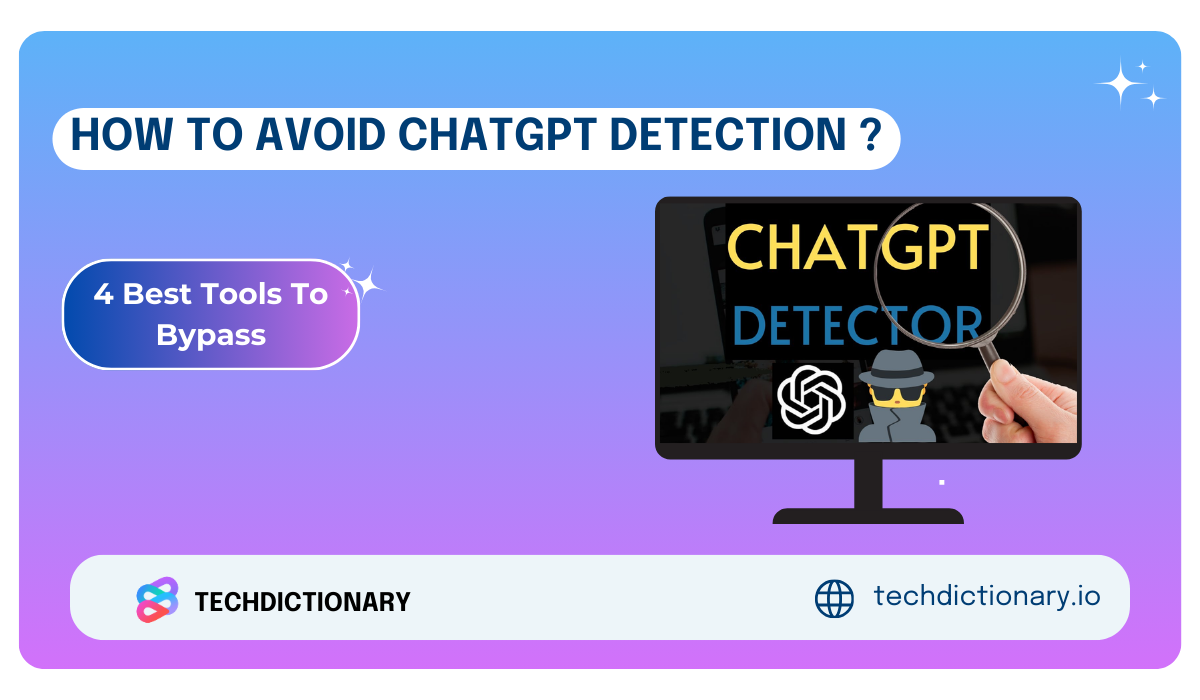
ChatGPT and other large language models (LLMs) opened a new chapter in our writing journey. However, AI-generated content is still not a favorite and is even prohibited in many cases. That’s why people rely on detection tools to identify content that flags AI. So, how can you overcome this? Our article will delve into a helpful guide on how to avoid ChatGPT detection.
Generally, we still value how ChatGPT provides us with helpful writing ideas, but what makes a difference is our human flair and using some editing techniques.
Keep reading for detailed tips!
ChatGPT detectors and other AI detection tools can find content that was generated by ChatGPT or other (LLMs). They are developed to analyze ChatGPT’s writing styles, which can be shown in sentence structure, vocabulary use, and text predictability. They can also compare the texts to a database of known AI-generated content, finding any sign of bot writing.
There are a wide variety of ChatGPT detection tools on the market. Here are the most popular names:
Maybe You Are Interested:
How To Detect AI Writing: A Detailed Guide
How to Tell if Something Was Written by ChatGPT? (2025 guide)
ChatGPT detectors are designed to facilitate anyone needing to catch AI content or those looking to improve the originality of their texts. More specifically, the certain target audience of these detectors are:
It’s time to dive into how to avoid detection of ChatGPT. Following are seven crucial techniques that can by applied to a variety of content.
Burstiness is about variation in sentence length and depth. When people write, they naturally combine short, simple lines with long, complex ones to express their diverse ideas. On the other hand, you might spot a more consistent pattern in AI content.
Perplexity refers to how hard it is to guess the next word in a string. As humans, we often use more complicated sentence structures, which leads to higher perplexity and makes things unpredictable for readers. In contrast, AI-generated material is easier to understand because it focuses on clarity and has limitations in vocabulary use.
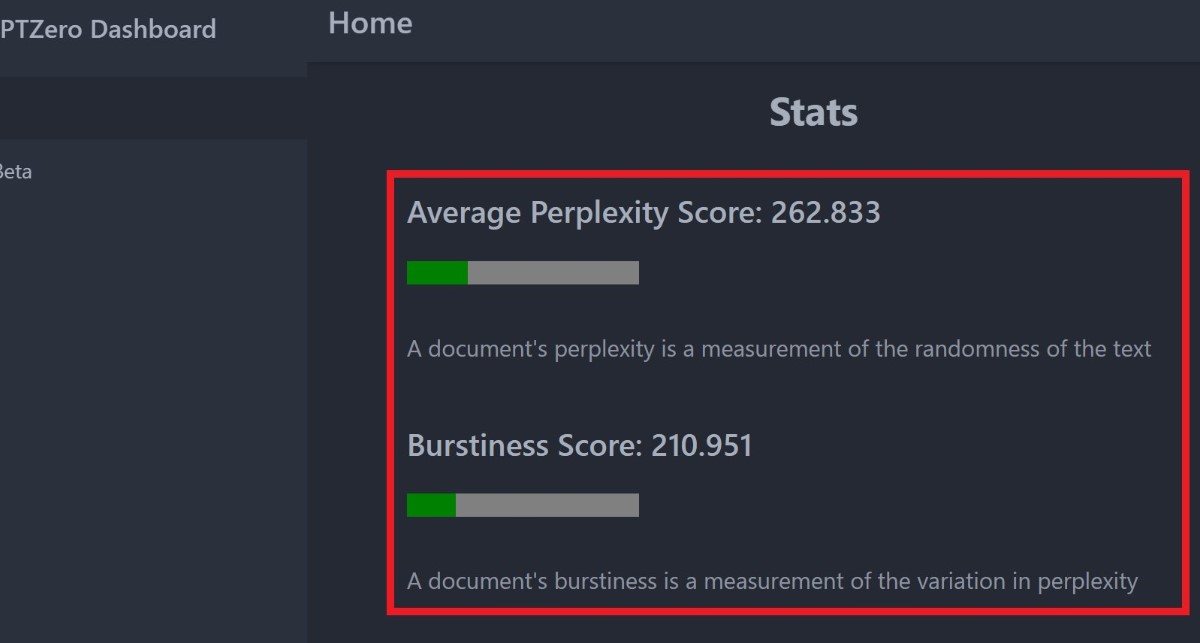
Perplexity and Burstiness example – Source: Mushtaq Bilal, PhD
The fact is that many ChatGPT detection tools work by analyzing burstiness and perplexity. That’s why making changes in your texts regarding these elements is a smart move to avoid detection.
Here are some tactics to help increase burstiness & perplexity in content:
This doesn’t mean the output is 100% free of AI signs. However, it somehow improves the readability and tone of your content.
To prove this, we’ve conducted a small test. First, we asked ChatGPT to present an answer to our prompt, “What is affiliate marketing?”. Well, the result is shown below:

ChatGPT Output
Then, we added another prompt, requiring it to act as a human and give us a more natural answer. The output improved a lot, but we added some extra personal touches to make it sound more human-like. Generally, we used the tips in the previous section to increase burstiness and perplexity. We changed the sentence length, structure, and vocabulary.
Practicing prompts is essential to use them proficiently which can make ChatGPT write like a human.
Here comes the most intriguing part: checking our texts against ChatGPT detectors. We’ve picked three out of the seven above names to experiment with. And the result is amazing:
Checking with Originality AI:
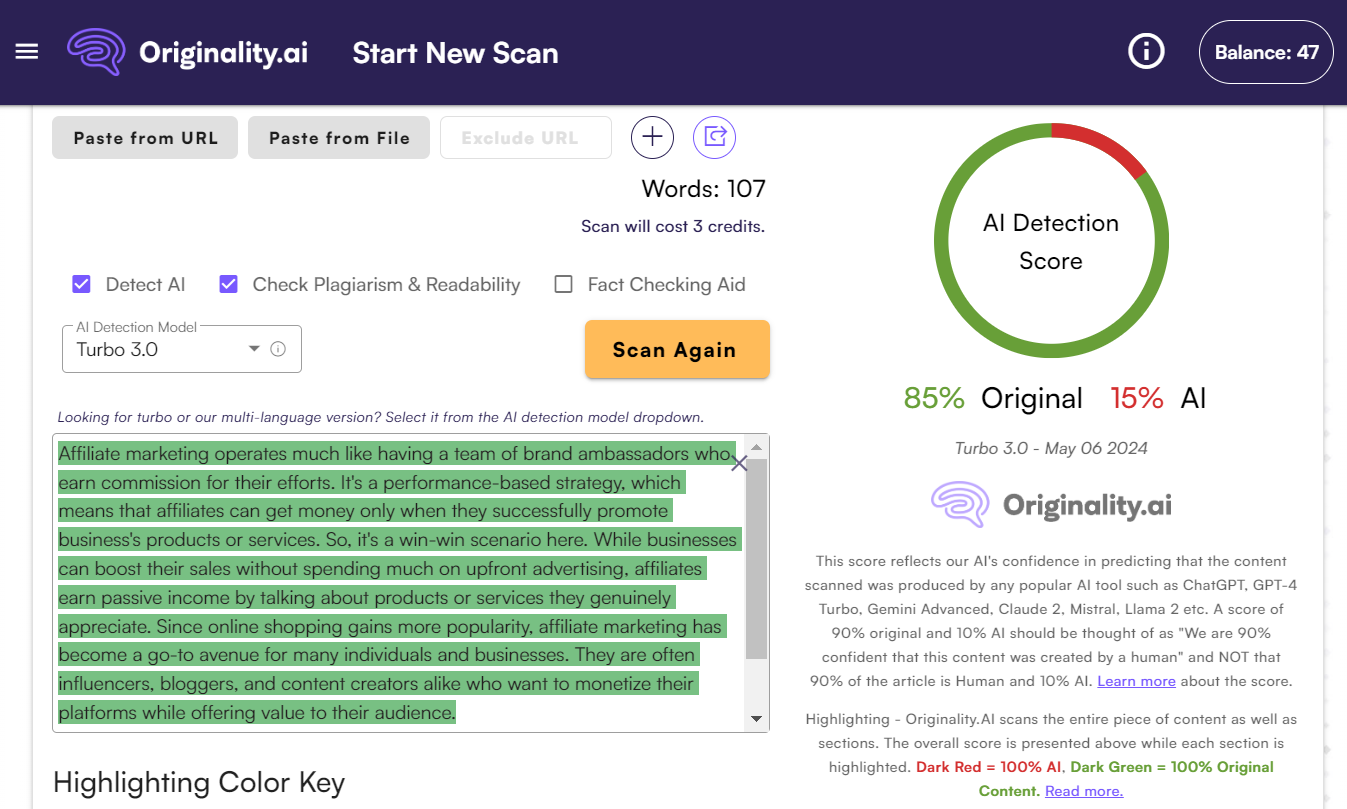
The Result Of Originality’s AI-content Detection
Checking with Copyleaks:
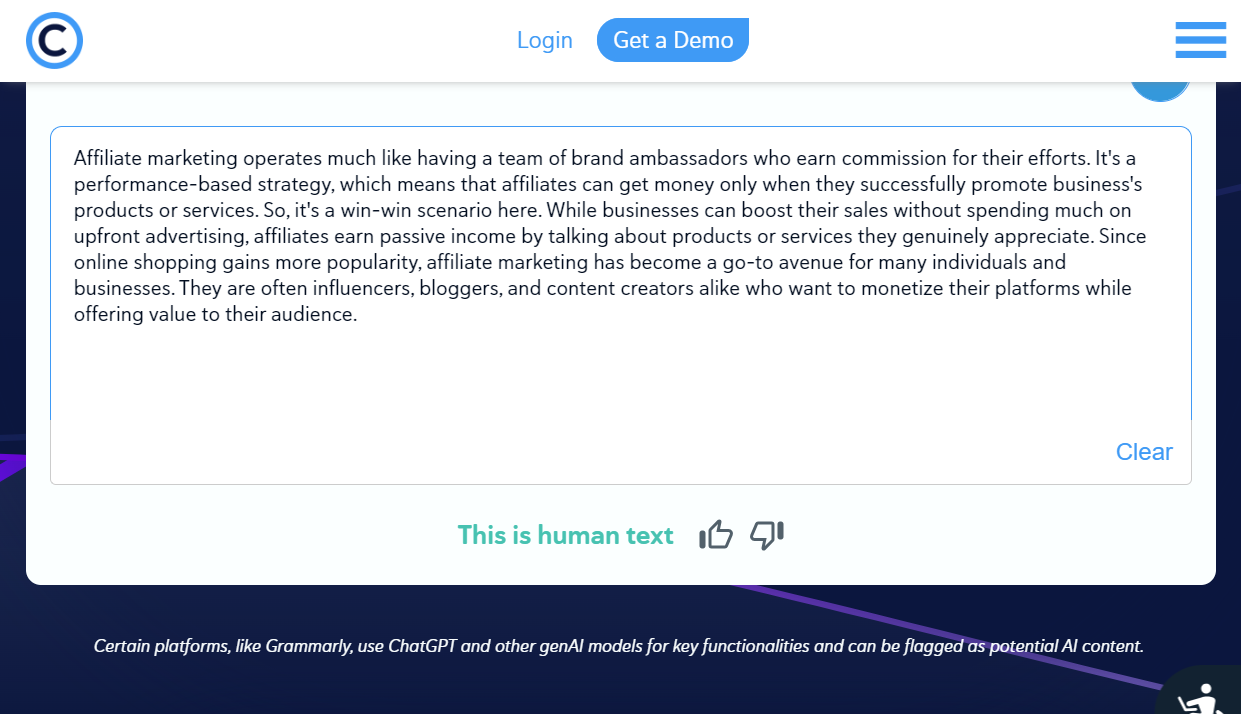
The Result Of AI-content Detection Of Copyleaks
Checking with ZeroGPT:
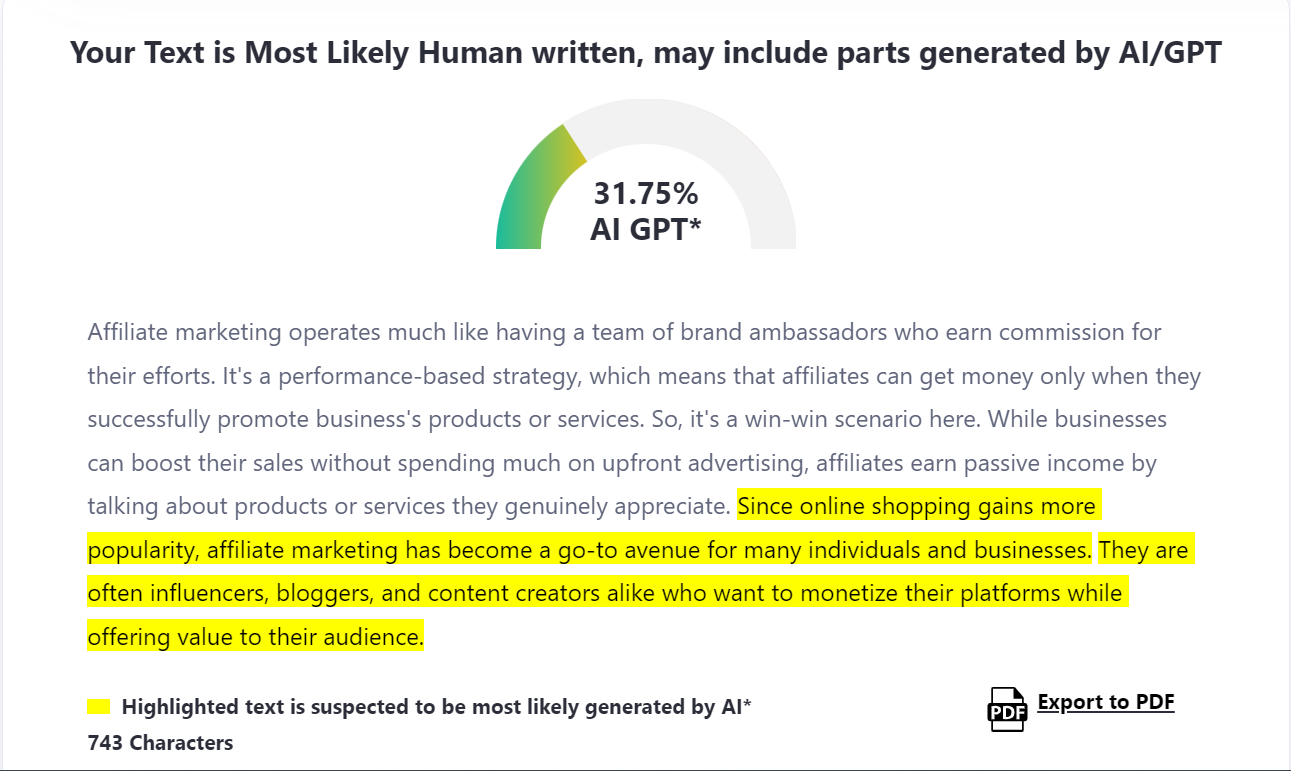
The Result Of ZeroGPT’s AI-content Detection
Copyleaks gave us a “green” flag, whereas the others concluded that most of our texts are human-written.
So, this is our tip on how to avoid AI detection with ChatGPT. Though you can’t rely entirely on this approach to ensure 0% AI content, it’s worth adding to your writing process to improve originality.
Another tip on how to avoid ChatGPT detection is to compensate for what AI content often misses – depth and context.
Human writers naturally add what they know and have experienced to their content, making it more interesting and connecting deeper with the readers. So, instead of just listing facts or concepts, use details and specific examples to demonstrate what you represent. This way, you not only make things easier to understand but also give your writing a human touch to avoid AI detectors.
Paraphrasing is a powerful way to elevate your writing. You can ask ChatGPT to generate ideas for your writing. Then, use your own skills to rephrase the content and give it a brand-new coat.
But there’s another innovative way to accomplish this mission: accessing AI paraphrasing tools. Of course, your personal touches are still crucial for refinements. However, we perceive that it’s a wise way to approach this method, especially when you proceed with a large amount of text.
In the last section of this article, we’ll test some reliable paraphrasing tools to help you understand how they’re performing. Stay tuned!
If you’ve used ChatGPT long enough, you might easily realize that it often uses repetitive phrasing and predictable sentence structures. Detectors will catch these signs and flag AI for your content immediately.
So, eliminating these patterns is crucial in creating content that reads naturally. But how?
Citations help showcase your study skills and establish your credibility. So, prove to readers and AI detectors that you’re the owner of your writing by citing real sources.
Since AI-generated content often overlooks these elements, adding them to your writing will increase the human vibe and leave ChatGPT detectors in the dust.
Last but not least, this guide on how to avoid ChatGPT detection values your unique voice. AI can copy some writing styles, but it struggles to capture the true spirit of a human voice. Thus, if you embrace your unique style, you can make your content stand strong against any detector.
First, show who you are through the words you use and the way you write. For instance, if you’re a funny person, consider interpreting your sense of humor to your content.
Second, remember to put your own unique thoughts into your writing to showcase any new look on the topic.
Finally, add your passion to the content for a deeper engagement with readers.
Related Article:
10 Effective Ways to Humanize AI Content in 2025 (Tested & Results)
Can ChatGPT Write Erotica? A Guide to Crafting Sensual Stories with AI
We’ve handpicked some reliable tools that can help you humanize AI content to some extent:
Undetectable AI offers a helpful feature to bypass detectors: rephrasing content. However, while it’s a good option for a quick scramble, it may struggle with complex writing.
Let’s do a small experiment!
As usual, we let ChatGPT create a small text for us. Then, we paste it into Undetectable AI’s input box and click “Humanize”. Here’s the result:
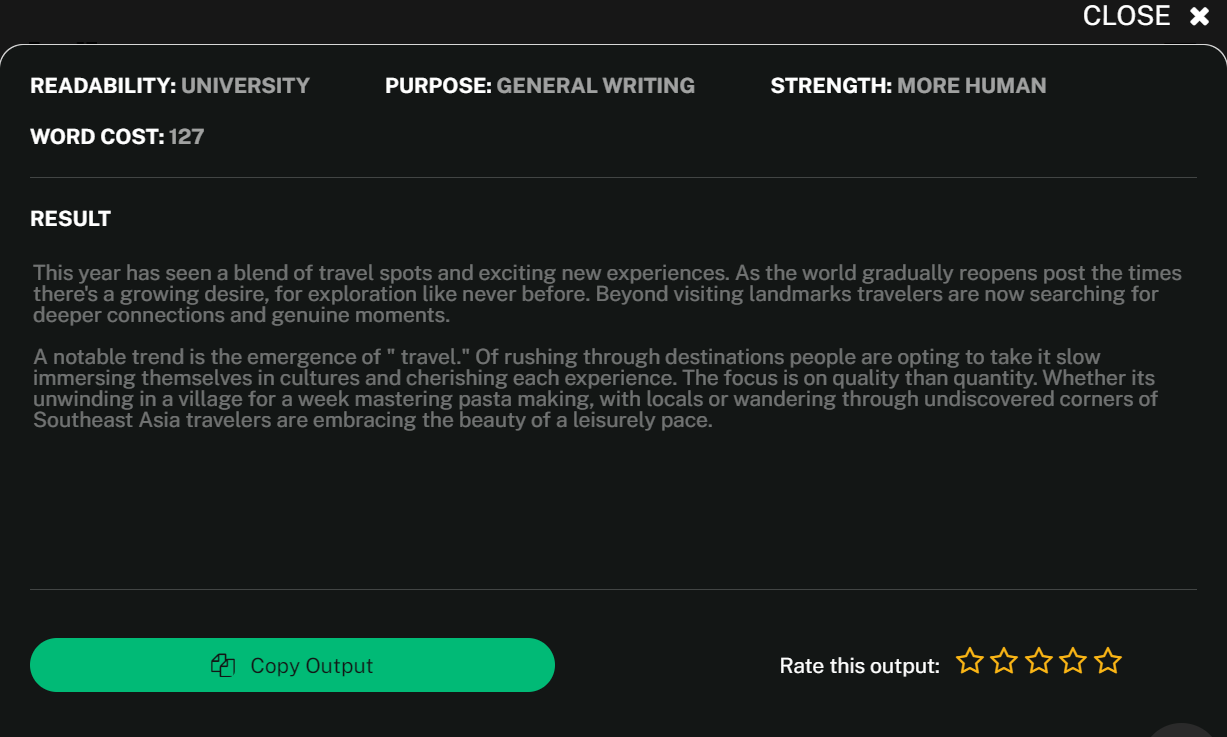
How To Avoid ChatGPT Detection in 2025: Using Undetectable AI
Now, let’s check if it’s bulletproof against AI detectors. This time, we use Copyleaks, and the result is quite satisfying.
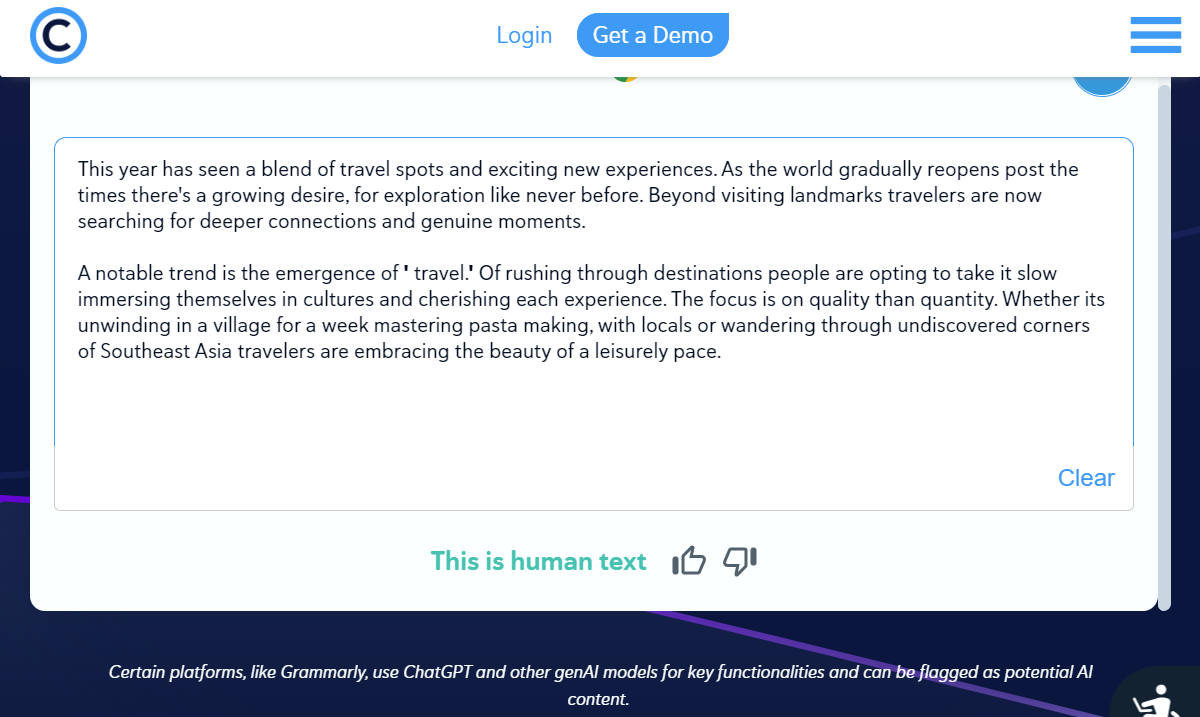
Checking Humanized Content By Copyleaks
However, note that we only tested a small piece of content. Results might not be marked as “Human” every time you check. So, use Undetectable AI and other tools listed next in a careful and smart way.
QuillBot is a well-known paraphrasing tool that offers diverse modes for renewing your content. It also allows you to choose alternative synonyms for the rewritten words.
We’ll check QuillBot’s Simple mode to paraphrase the ChatGPT-generated content this time.
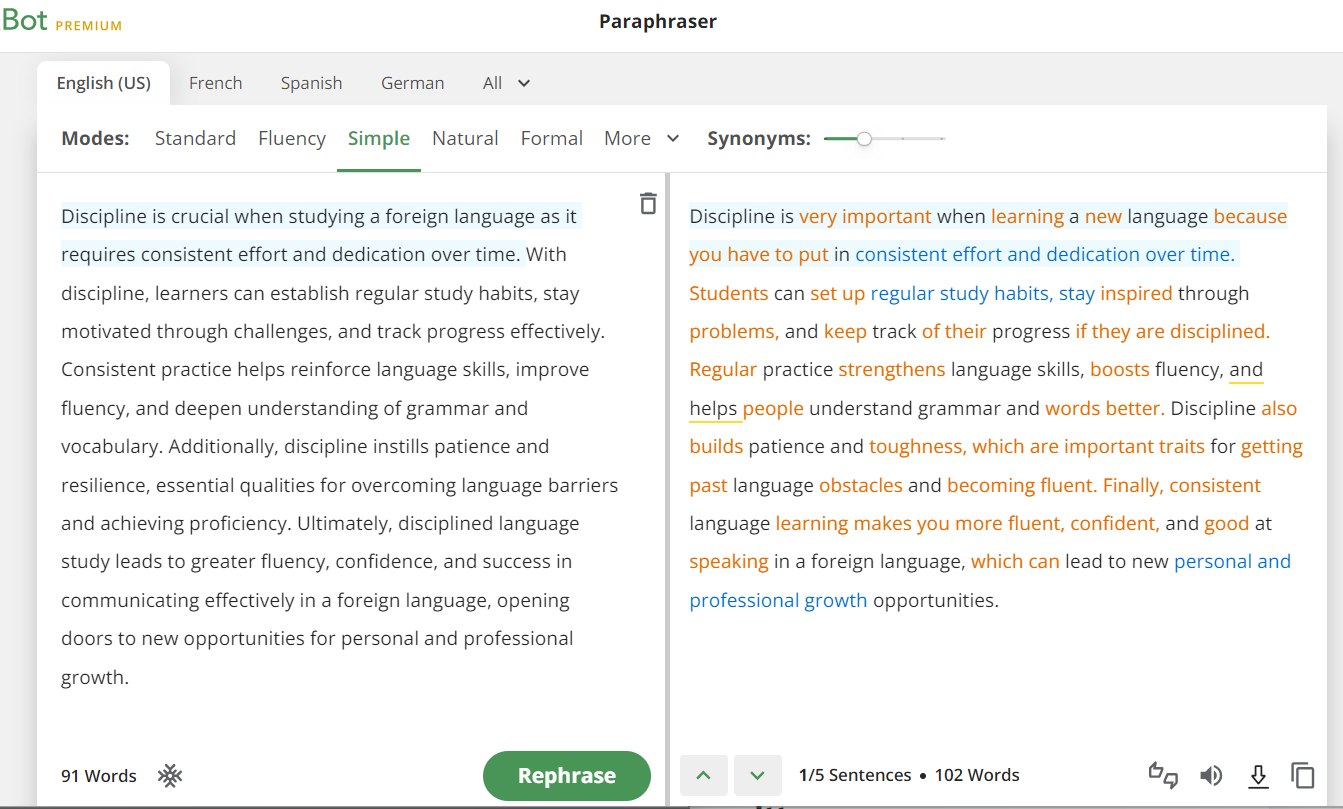
Using QuillBot to Avoid ChatGPT Detection
Then, we made some refinements to the rephrased text before checking the probability of AI content using Originality. The detector showed 82% of human-written content. Cool, right?
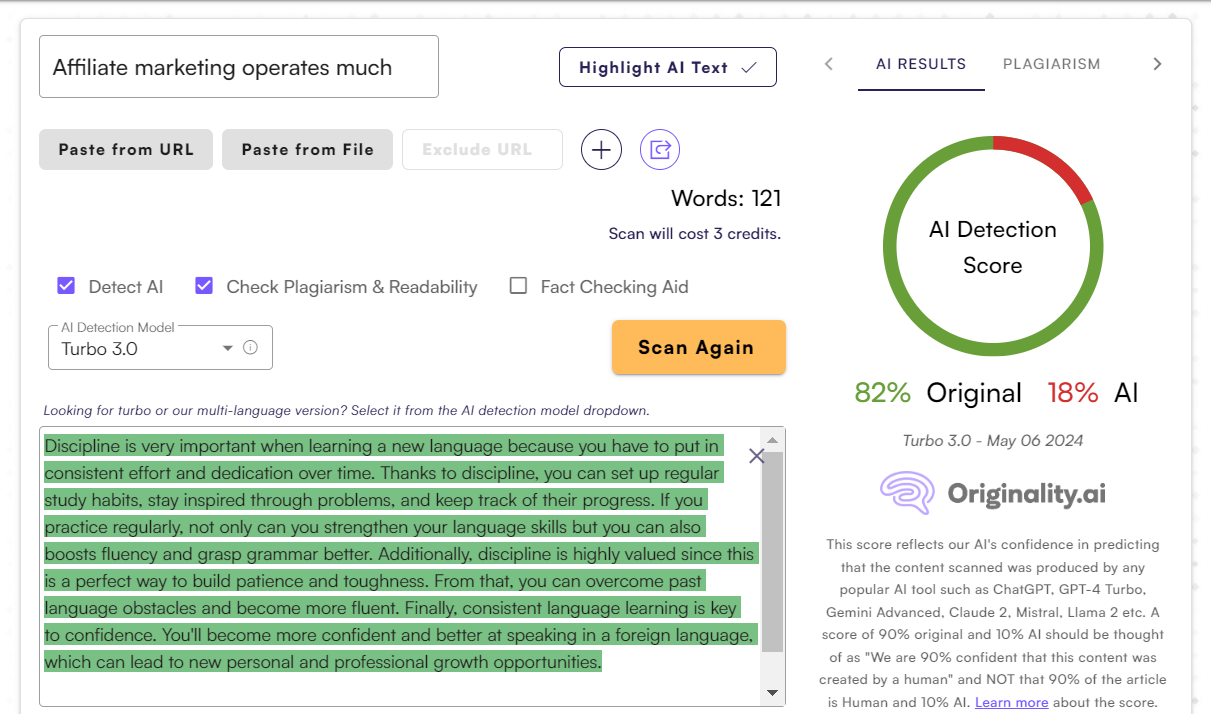
Using Originality AI To Check Rephrased Content
Stealthwriter is another reliable tool for generating original content. It offers a free plan to humanize up to 300 words each time.
Again, we asked ChatGPT to generate another text for us. Stealthwriter then humanized it and delivered five variations for us to choose from.
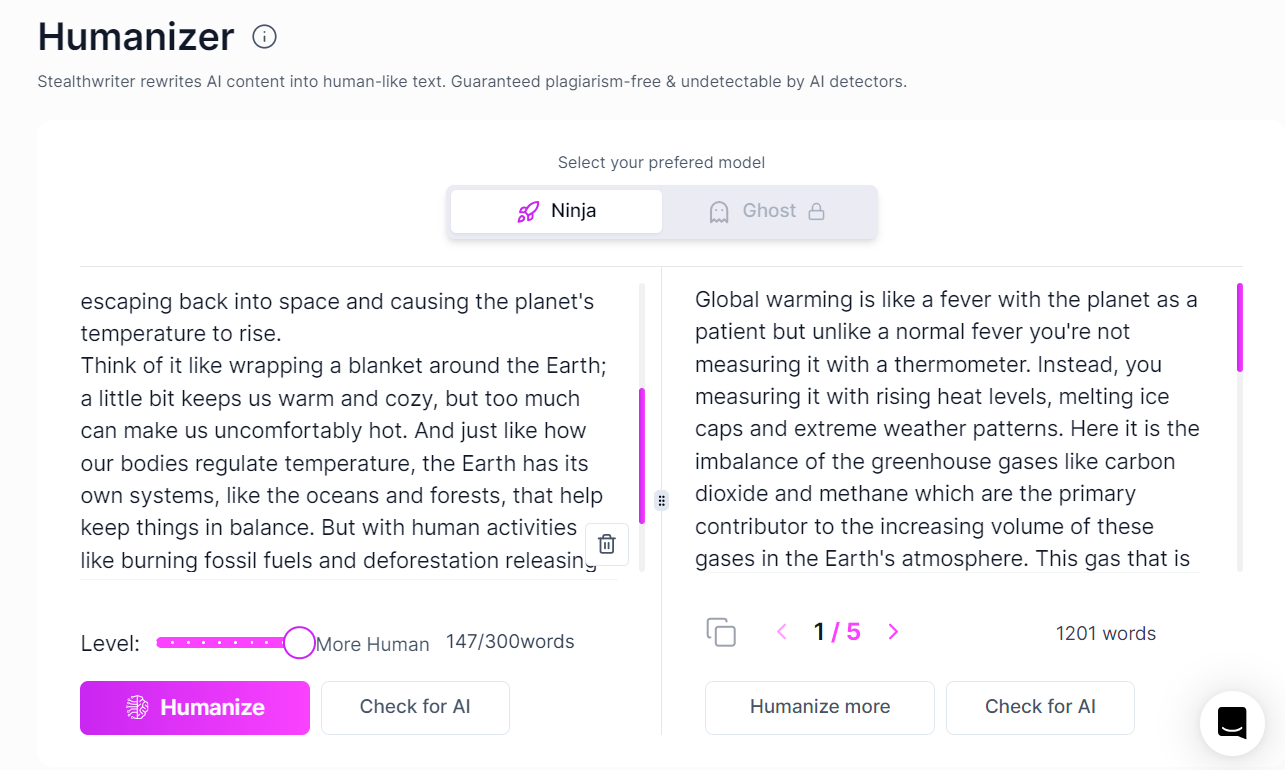
Humanizing ChatGPT-generated Content with StealthWriter
We copied and pasted the first version into AI detection tools, including CopyLeaks, Originality AI, and ZeroGPT. Amazingly, it bypassed all of them.
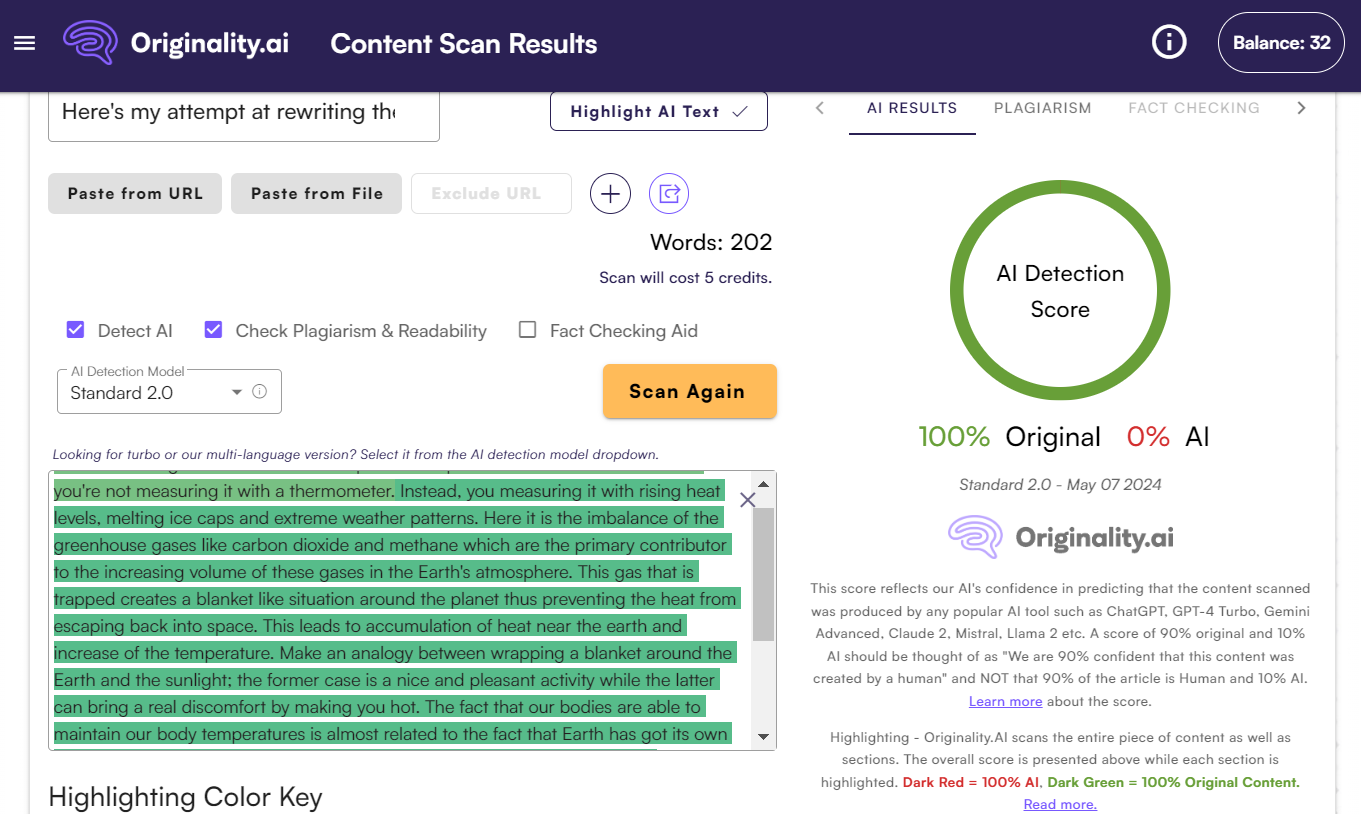
Checking StealthWriter Humanized-content Using Originality AI
This last tool is a great alternative to Originality AI. It has the power to rewrite your content at different levels (e.g., professional, undergraduate). Well, let’s experiment with its Professional-casual option.
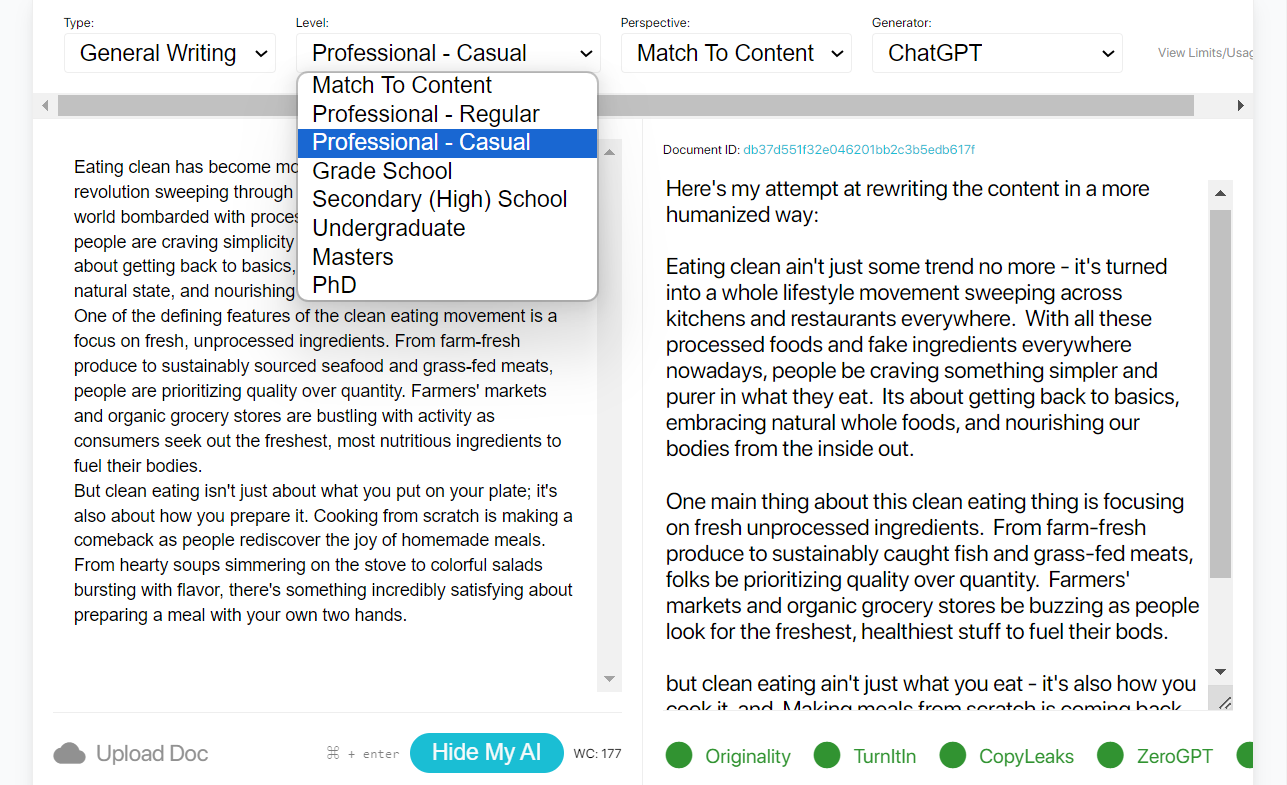
Rewriting Texts Using HideMyAI
The platform claims its rewritten content can bypass all popular AI detectors on the market. We checked it against the three tools used previously.
There’s a little difference in results. While CopyLeaks still flagged it as AI content, Originality AI and ZeroGPT showed 100% human-written content. Still, we perceive this tool is worth trying when you want to add a natural vibe to your writing.
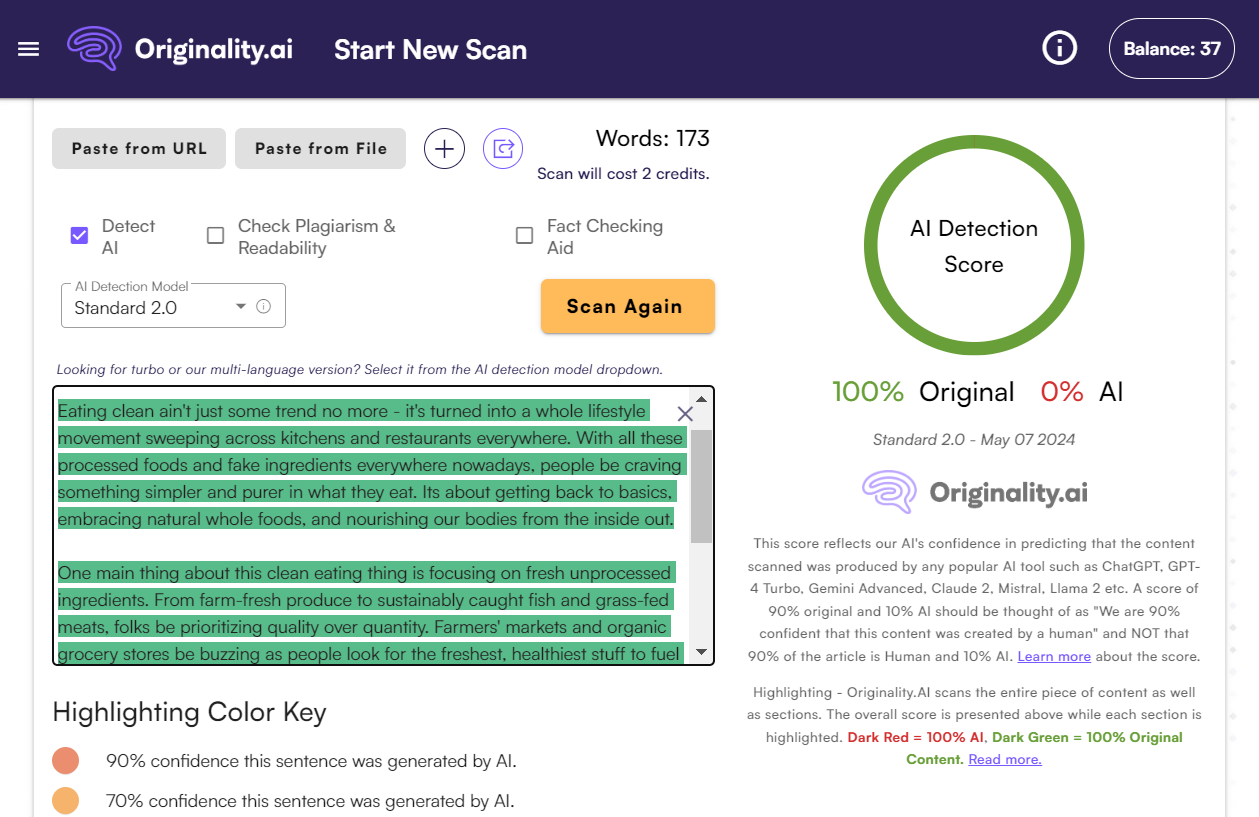
HideMyAI’s Rewritten Text ByPasses Originality AI
Important note: While these tools can help refresh your content, remember that AI constantly changes. So, think of them as allies, not replacements for your own creativity. You should use them along with the tips provided above to make your content truly interesting and original.
We hope you understand how to avoid ChatGPT detection through our detailed guide. In short, it’s a combination of using other assistants like QuillBot and adding some magic touch – your creativity to make the content sound more human-like.
So, is there any other idea for bypassing AI content? Would you try our tips right away? Leave a comment below to let Techdictionary know the result!
You may be interested in:

